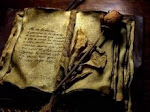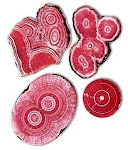
 Christa Zaat
Christa Zaat
 Alfred de Bréanski Sr. (British painter) 1852 - 1928Ben Lomond, s.d.oil on canvas127 x 76 cm. (30 x 50 in.)signed l.l.: Alfred. de Bréanski; titled and signed on the reverse: "Ben Lomond" NB/ Alfred De Bréanski Snr
Alfred de Bréanski Sr. (British painter) 1852 - 1928Ben Lomond, s.d.oil on canvas127 x 76 cm. (30 x 50 in.)signed l.l.: Alfred. de Bréanski; titled and signed on the reverse: "Ben Lomond" NB/ Alfred De Bréanski Snr
private collection
Alfred de Bréanski was a distinguished landscape painter who became famous for his resplendent views of the Welsh and Scottish Highlands; he also painted many views of the Thames. Often bathed in a flood of golden light, these landscapes usually feature water and cattle or sheep on grassy banks; sometimes a solitary figure is seen the distance.
Bréanski belonged to the real stamp of those landscape painters who nimbly seized moments of the day. He had a great passion for the Highlands and perhaps more than any other, caught the atmospheric influences of the undulating landscape.
Born in London, Alfred was the eldest son of Leopold Bréanski; his younger brother and sister, Gustave and Julie, were also painters. He made his debut at the Royal Academy in 1872 and he continued to exhibit there until 1918. He also exhibited at the Royal Institute of Oil Painters and the Royal Cambrian Academy. His many patrons included Sir James Lemon and the Bishop of Peterborough, who purchased the first picture that he exhibited at the Royal Academy: Evening: Softly falls the even light.
In 1873, Bréanski married Annie Roberts, a talented Welsh artist whom he met during his frequent painting trips to Wales. They had seven children, two of whom, Alfred Fontville and Arthur, were both to become painters. For much of his life Bréanski lived in Greenwich, Lewisham and Cookham and in 1880 he became a Freeman of the City of London.


 Christa Zaat
Christa Zaat
 Caspar David Friedrich (German painter) 1774 - 1840Winterlandschaft mit Kirche (Winter Landscape), 1811oil on canvas32.5 x 45 cm. Museum für Kunst und Kulturgeschichte, Dortmund
Caspar David Friedrich (German painter) 1774 - 1840Winterlandschaft mit Kirche (Winter Landscape), 1811oil on canvas32.5 x 45 cm. Museum für Kunst und Kulturgeschichte, Dortmund
In a letter of 22 June 1811, written by Friederike Volkmann in Dresden to the psychologist Dr Christian August Heinroth in Leipzig, this painting is described as the pendant to the Winter Landscape now in Schwerin.
The Schwerin painting is characterized by the sombreness of an expanse of snow stretching away into the infinite distance, which modern interpreters see as a symbol of death, a nihilistic sign of doom. The pendant in Dortmund introduces, for the first time in Friedrich's oeuvre, a Gothic church, seen as a monumental vision emerging out of the mist like a phantasmagoria and rising against the gloomy background of a winter sky. Nearer the viewer, a man is leaning back against a boulder and gazing up the crucifix in front of a cluster of young fir trees. He has flung his crutches demonstratively far away from him into the snow. This combination of motifs has been interpreted as a reference to the security of the Christian in his faith.
There is a second version of this picture in the National Gallery, London. Although the two paintings appear at first glance to be identical, there are minute details in the London painting that do not appear in the Dortmund picture. The most noticeable are the gateway in front of the church and the blades of grass poking through the melting snow in the foreground.The Dortmund ‘Winter Landscape’ is probably a replica by Friedrich himself or possibly by a pupil or imitator; its fidelity to the original suggests that it may even have been made while the National Gallery painting was still in Friedrich’s studio in Dresden.
* * *
Caspar David Friedrich was a 19th-century German Romantic landscape painter, generally considered the most important German artist of his generation.[2] He is best known for his mid-period allegorical landscapes which typically feature contemplative figures silhouetted against night skies, morning mists, barren trees or Gothic ruins. His primary interest as an artist was the contemplation of nature, and his often symbolic and anti-classical work seeks to convey a subjective, emotional response to the natural world. Friedrich's paintings characteristically set a human presence in diminished perspective amid expansive landscapes, reducing the figures to a scale that, according to the art historian Christopher John Murray, directs "the viewer's gaze towards their metaphysical dimension".


 Christa Zaat
Christa Zaat
 Caspar David Friedrich (German painter) 1774 - 1840Nebel im Elbtal (Fog in the Elbe Valley), 1822-23oil on canvas33 x 43 cm.Staatliche Museen zu Berlin, Germany
Caspar David Friedrich (German painter) 1774 - 1840Nebel im Elbtal (Fog in the Elbe Valley), 1822-23oil on canvas33 x 43 cm.Staatliche Museen zu Berlin, Germany
This painting has the delicacy of Chinese painting on silk in its silent capture of rolling mist. Antlerlike bare branches grouped in the foreground suggest a flock of deer.
***
Caspar David Friedrich (September 5, 1774 – May 7, 1840) was a 19th-century German Romantic landscape painter, generally considered the most important German artist of his generation.[2] He is best known for his mid-period allegorical landscapes which typically feature contemplative figures silhouetted against night skies, morning mists, barren trees or Gothic ruins. His primary interest as an artist was the contemplation of nature, and his often symbolic and anti-classical work seeks to convey a subjective, emotional response to the natural world. Friedrich's paintings characteristically set a human presence in diminished perspective amid expansive landscapes, reducing the figures to a scale that, according to the art historian Christopher John Murray, directs "the viewer's gaze towards their metaphysical dimension".

ANDANDO TRAS LAS SOMBRAS DE "el dispensador" ▲ gracias por acompañarme en este viaje a la mística de las eternidades olvidadas... 30 de JUNIO de 2016
 "el dispensador" es marca registrada de Cerasale Morteo, Víctor Norberto, desde 2007 a 2016. Salta, República Argentina. Asimismo, "el dispensador", sus títulos y contenidos, están protegidos por los derechos de propiedad intelectual según la Ley 11.723 de la República Argentina. Las fotografías utilizadas pertenecen a sitios protegidos por derechos de propiedad intelectual.
"el dispensador" es marca registrada de Cerasale Morteo, Víctor Norberto, desde 2007 a 2016. Salta, República Argentina. Asimismo, "el dispensador", sus títulos y contenidos, están protegidos por los derechos de propiedad intelectual según la Ley 11.723 de la República Argentina. Las fotografías utilizadas pertenecen a sitios protegidos por derechos de propiedad intelectual.
los contenidos de "el dispensador" tienen copyright 2007-2016 by Cerasale Morteo, Víctor Norberto para Google, Google+, Twitter, Facebook y demás redes sociales. Salta. Argentina. Derechos reservados de Propiedad Intelectual sobre "el dispensador". EL DISPENSADOR, representando el pensamiento lemur y atlante, nubio/egipcio e indo en occidente.
todos los contenidos de "el dispensador" editados por Google y sus espacios de "nube", están regulados por las leyes de los Estados Unidos de Norteamérica.
Lectores ► ¡16.429.051! y sumando
visitas registradas por Google+ 494,1 MILLONES!!! sí, leíste bien... y tú eres uno de ellos, ¿qué más?... sólo puedo decirte gracias.
 Noroeste Aŗg
Noroeste Aŗg
 documentos editados en JUNIO 2016: 264+
documentos editados durante 2016: 1.237+
documentos editados desde 2008 a la fecha: 6.668+
lectores permanentes directos al sitio: 656.132+
documentos visitados en el último mes (JUNIO 2016): 16.628+
documentos editados en JUNIO 2016: 264+
documentos editados durante 2016: 1.237+
documentos editados desde 2008 a la fecha: 6.668+
lectores permanentes directos al sitio: 656.132+
documentos visitados en el último mes (JUNIO 2016): 16.628+

Páginas vistas por países
| Entrada | Páginas vistas |
|---|
|
|
175.139
|
|
|
87.246
|
|
|
74.244
|
|
|
60.838
|
|
|
36.150
|
|
|
34.572
|
|
|
17.872
|
|
|
16.939
|
|
|
12.789
|
|
|
7.676
|

Archivo del blog
Archivo del blog
Archivo del blog

































